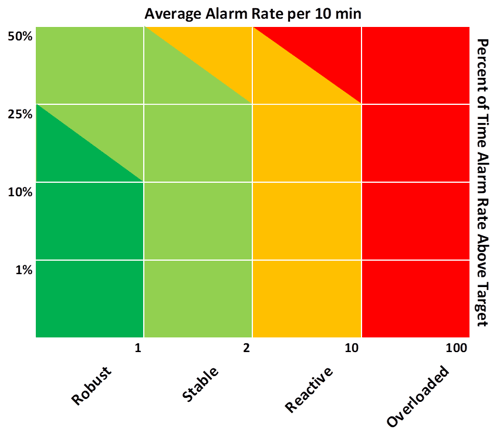The key objective for a DCS engineer is to make sure automated operations run as smoothly and as safely as possible. You want to keep the operators as happy as possible - which means keeping the alarms to a minimum and prevent operator interventions. The impact of optimal PID tuning on smooth and safe operations and the number of operator interventions, cannot be overestimated. With a fully-booked schedule, PID tuning is often something that has a lesser priority.
In this blog, we want to explain the impact of the PID tuning on the operator interventions. The first objective of this blog is to put PID tuning higher on the priority list. The second aim is to provide you a way to achieve better tuning within a minimum of time and on a first-time-right principle.
Impact of PID tuning on alarms
temperatures or pressures tend to hit more often the upper and lower alarm levels, resulting in more frequent alarms. As a DCS engineer, you can prevent these alarms from happening with a simple tuning.
PID controllers that are not optimally tuned for disturbance rejection can lead to alarm waves through the complete process. When a disturbance enters a process, the directly affected PID controllers must reduce the effects as soon as possible and as much as possible. This will prevent the disturbance to travel through the whole process. With correctly tuned PID controllers, the disturbance might result in a few local alarms where the disturbance entered. With badly tuned PID controllers a wave of alarms will occur following the travel of the disturbance through the plant. Operators, controlling downstream sections will have to deal with alarms that are caused by a couple of badly tuned controllers in the upstream section of a plant. A disturbance should be handled locally if possible and only the operator responsible for that section should take action. You can prevent these alarm waves from happening with tuning.

Impact of PID tuning on manual operations
Oscillating loops, causing too many alarms or even disturbances in the process, are very often put in manual mode. This means that the operators will have to manipulate the pumps, valves, compressors, etc when due. These are operator actions that can be avoided with proper tuning. When the situation is hectic in the control room, the operator will only have time to set new values for the valves and pumps when alarms go off.
Loops that are not able to handle disturbances optimally are often put into manual mode when a large disturbance enters the process. This will result in more operator actions and very likely also more alarms than necessary.
Impact of PID control structures on operator interventions
Even when all loops are in auto and all goes well, you sometimes notice that operators change setpoints of certain loops very frequently (10 times per hour or more). When that happens you should wonder if something is missing in the control concept of the process. A master-slave setup or some feedforward might be the solution to compute the optimal setpoint automatically. Having this in place will allow the operator to focus on more essential aspects of operating a plant.
The solution - PID tuning software
PID tuning and in a second step perhaps changing the control concepts will help to reduce the operator interventions. This will result in better plant performance, less operator stress, fewer alarms, and therefore safer operations.
When done properly, PID tuning is not a time-consuming activity. Many DCS engineers waste a lot of time by using a trial and error approach resulting in many tests, many trials, many errors and therefore many complaints.
Assume you had a PID tuning software tool that tunes ALL your loops in a First-time right approach. You define the loop, you perform one test, you tune once and your job is done. No repeat, no hoping for the best. Read our case study how FrieslandCampina increased the quality, capacity and stability of 64 plants with INCATools PID tuner.
Do you like to know what INCATools PID tuning software can offer you?
Request your demo here.




